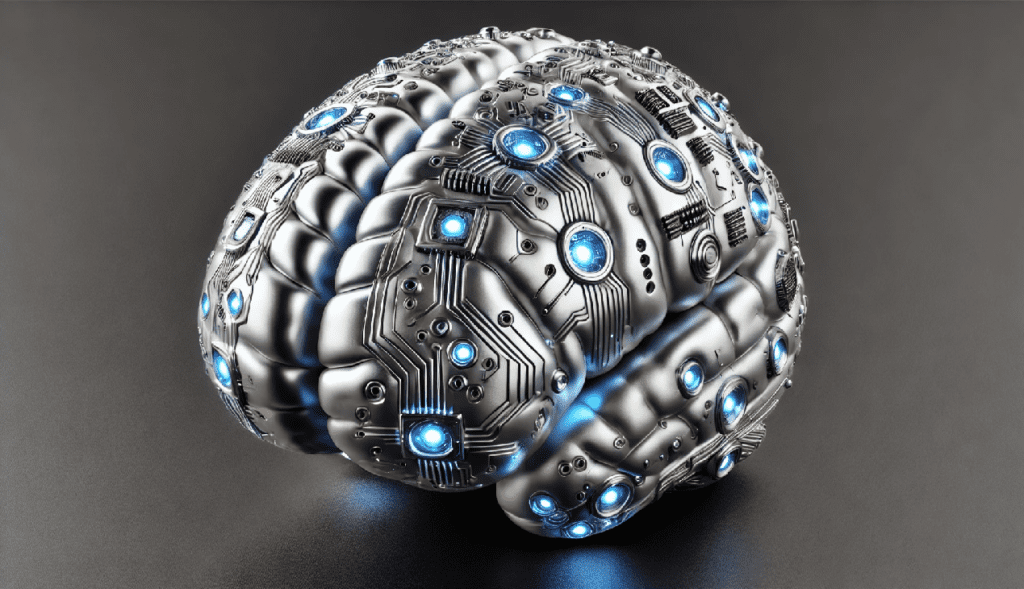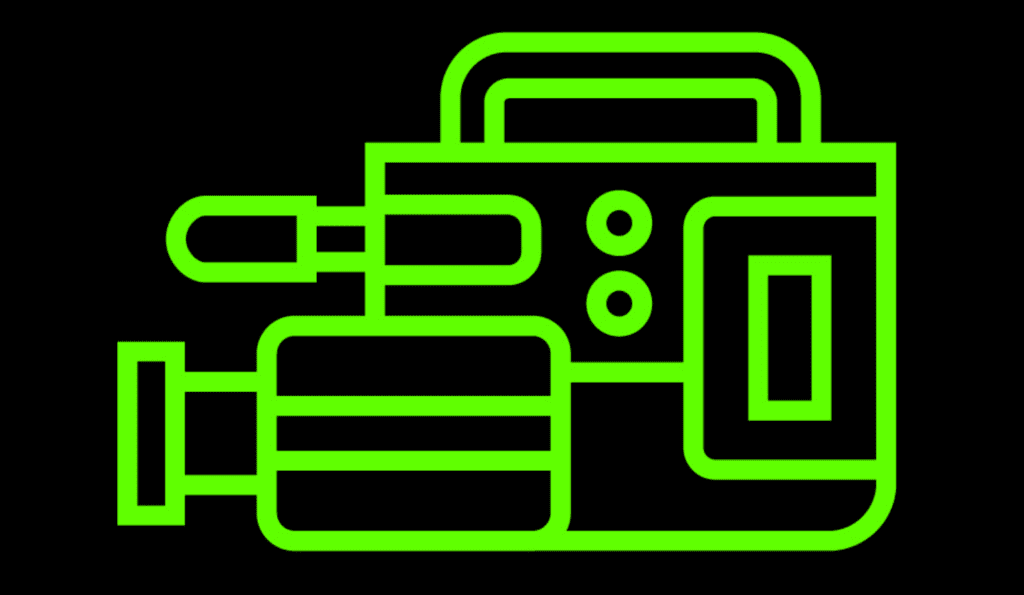We have covered Artificial Intelligence (AI) numerous times here on the blog. But those AI technologies are somewhat limited in capabilities. What comes next? The answer is Artificial General Intelligence (AGI).
AGI is the closest AI in concept to human intelligence.
With this topic growing in popularity, I decided to take a step aside from our typical focus on digital marketing only.
For this post only, let’s spend a little time talking about something that can change our lives for the better across the board one day!
In this guide, we’ll explore AGI’s potential applications and the challenges researchers face in trying to make it a reality.
Artificial General Intelligence Definition
I’ve offered a cursory description of what AGI is, but let’s look at a real definition.
What is Artificial General Intelligence (AGI)?
AGI refers to a hypothetical AI system that can understand, learn, and apply knowledge across a range of tasks.
The goal is to reach a level equal to or beyond what humans can do.
Key Characteristics of AGI
An AGI system would exhibit human-like intelligence.
This intelligence would be characterized by its ability to reason, problem-solve, and adapt to new situations.
Artificial General Intelligence would possess a unique ability to generalize knowledge, applying it to novel situations and tasks, much like humans do.
This means that an AGI system would not be limited to a specific domain or task.
Instead, it would be able to learn and adapt across multiple areas, making it a truly versatile and powerful tool.
You would be able to interact with an AGI system in a natural, human-like way. In return, it would be able to understand and respond to your requests accordingly.
Artificial General Intelligence vs. Other AI Concepts
So we’ve covered a definition of AGI, but let’s analyze how it really differs from the typical AI we all have access to already.
Artificial General Intelligence vs. Narrow or Weak AI
Artificially intelligent systems, like Siri or Alexa, are designed to perform a specific set of tasks.
These tasks might be things such as answering questions, reporting on the weather, or controlling smart home devices.
These narrow or weak AI systems lack the ability to generalize their knowledge across different domains.
AGI, on the other hand, aims to possess human-like intelligence and apply it to any task.
Artificial General Intelligence vs. Generative AI
Intelligence that can generate new content, such as images or music, is known as Generative AI.
While impressive, Generative AI is limited to its specific domain and lacks the broad problem-solving capabilities of AGI.
For instance, a Generative AI system can create realistic images of faces. BUT, it cannot reason about the context in which those faces appear or understand the nuances of human emotions.
Heck, if you’ve used any AI image generators, they can’t even spell words correctly, right?
AGI, on the other hand, would be able to comprehend and respond to complex situations involving faces, emotions, and context.
The Spectrum of Artificial Intelligence
Other types of AI, such as Narrow AI and Superintelligence, exist on a spectrum of intelligence.
Narrow AI is designed for a specific task, while Superintelligence surpasses human intelligence in all domains.
Weak AI systems, like those mentioned earlier, occupy one end of the spectrum. AGI, with its human-like intelligence, occupies the middle.
At the far end of the spectrum lies Superintelligence, which would possess an intelligence beyond human comprehension.
Once you understand this spectrum, you will be able to appreciate the unique goals and challenges of AGI research.
Real World Examples of AGI
All around you, various industries are trying to apply Artificial General Intelligence (AGI) in real-world applications.
If successful, they will be able to transform the way they perform tasks and make decisions.
Let’s explore some exciting examples of AGI in action.
Applications in Robotics
Robots equipped with AGI can navigate complex environments, recognize objects, and perform tasks that typically require human intelligence.
This might include things like product assembly, welding, or handling materials.
These robots can learn from experience, adapt to new situations, and improve their performance over time.
With this adaptability, they are great potential options for industries like manufacturing and logistics.
AGI in Healthcare and Medicine
World-renowned hospitals and research institutions are using AGI to analyze medical data, diagnose diseases, and develop personalized treatment plans.
By processing vast amounts of medical literature, AGI systems can identify patterns and connections that human doctors might miss.
With more advanced abilities to process this data and make those connections, the medical community can make more accurate diagnoses and drive better outcomes.
Medical Imaging Analysis is another key application of AGI in healthcare.
AGI-powered algorithms can quickly and accurately analyze X-rays, MRIs, and CT scans. Then, they can help doctors more accurately detect abnormalities and diseases at an early stage.
Imagine the benefits of these capabilities! We can minimize risks from complications and improve survivability for diseases where time is of the essence for prevention and recovery.
AGI in Finance and Economics
Investors and finance professionals are using AGI to analyze market trends, predict stock prices, and identify investment opportunities.
AGI systems can process vast amounts of financial data, recognize patterns, and make predictions with high accuracy.
With this information processing capability, investors and financial institutions can make more informed decisions.
Finance pros can also improve their approach to risk management with AGI.
By analyzing complex financial data, AGI systems can identify potential risks and alert financial institutions to take proactive measures.
With these measures in place, we can reduce the likelihood of financial crises and protect individual investors from disaster.
The Challenges of AGI
Of course, AGI also comes with some problem areas, particularly when developing these algorithms.
Overcoming the Challenges of Developing AGI
With AGI, humanity stands to make more breakthroughs that change our lives, and faster than ever.
To get there, we’ll need to tackle complex problems like creating human-like reasoning, dealing with vast amounts of data, and ensuring the system’s safety and transparency.
The key to success lies in interdisciplinary collaboration.
By combining expertise from fields like computer science, neuroscience, philosophy, and mathematics, we can create a more comprehensive understanding of human intelligence.
With this knowledge, we can then develop AGI systems that truly mimic it.
This means bringing together researchers, engineers, and theorists to share knowledge, ideas, and approaches.
We need to innovate. And collaboration is our best way to find the answers.
The Future of Artificial General Intelligence
So we aren’t quite there yet, but the day will come when we finally figure it out.
Let’s look at the potential scenarios for where this will take us once we succeed.
Predictions and Projections for AGI Development
Generally speaking, experts agree that AGI development will continue to accelerate, driven by advancements in machine learning, natural language processing, and computer vision.
You can expect significant breakthroughs in areas like robotics, healthcare, and finance, as researchers overcome current limitations and push the boundaries of what is possible.
The Potential Impact of AGI on Society
Any significant technological advancement has the potential to reshape the fabric of our society. Of course, AGI is no exception.
You may be wondering how AGI will affect your daily life, your job, and the world at large.
Consider the following: as AGI systems become more prevalent, they will likely augment human capabilities.
If this frees up time as expected, humans will be able to take on more creative and strategic tasks.
This could lead to increased productivity, improved decision-making, and enhanced overall quality of life.
However, it also raises some important questions. What about job displacement, accountability, and the need for new regulations and safeguards?
These are real issues, and we would be remiss to overlook them during our efforts to develop and implement AGI at scale.
Conclusion
So, all of this sounds super cool, doesn’t it?
Some might say scary, but there are always naysayers with every new technological advancement we achieve.
We all might as well take time to understand what is coming, because progress won’t stop if we are uncomfortable.
I choose to embrace things like AGI early, when we still have a chance to get ahead of the curve.
The future of Artificial General Intelligence is being shaped today – and you’re now an integral part of it. Imagine the possibilities to make our lives better when we have this technology at our disposal!
Tommy Landry
Latest posts by Tommy Landry (see all)
- B2B SEO in 2025: Winning Visibility in AI-Curated Buyer Journeys - December 16, 2025
- Local SEO Meets AEO and GEO: How AI Platforms Read Local Authority Signals - December 9, 2025
- What Is an SEO Proposal and What Should It Include? - December 2, 2025





